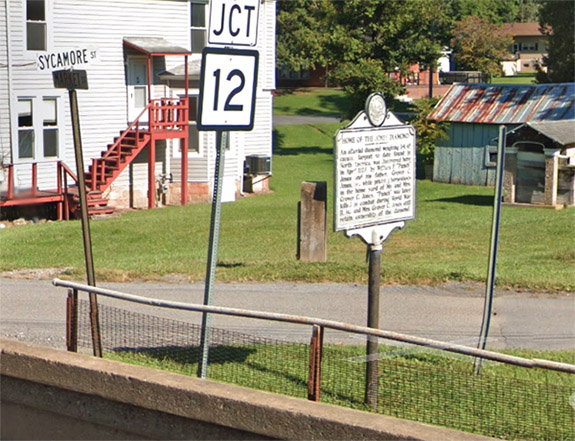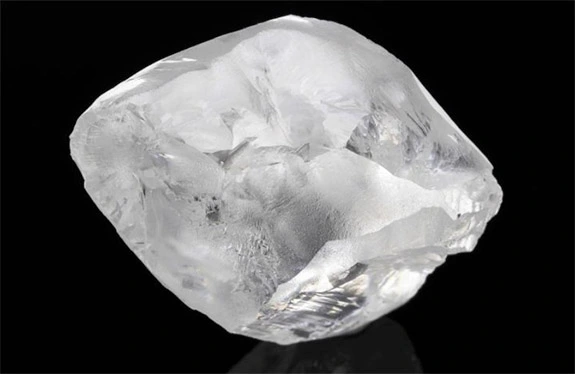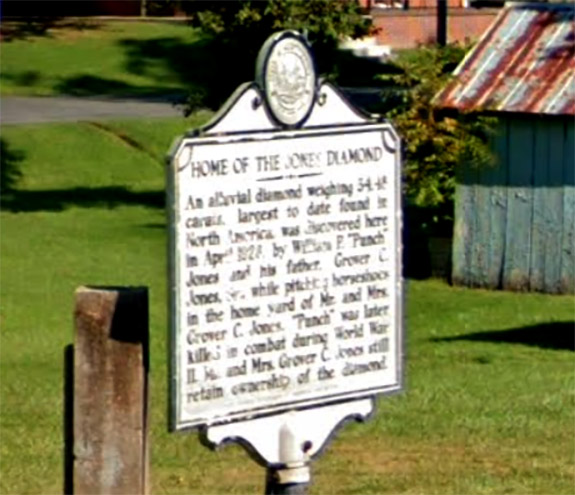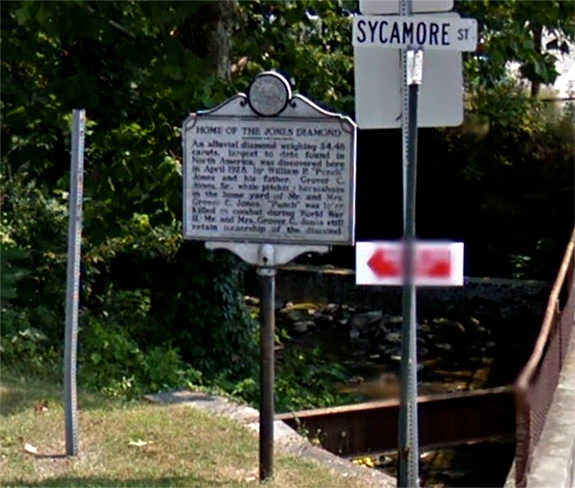North America's Largest Alluvial Diamond Was Unearthed in West Virginia in 1928
In the tiny town of Peterstown at the southern tip of West Virginia, a weathered historical marker describes the remarkable find of William "Punch" Jones and his father Grover C. Jones Sr., who unearthed North America's largest alluvial diamond — a 34.46-carat silvery octahedron — while pitching horseshoes in April of 1928.
How the enormous diamond ended up in the Jones's sandy lot near Rich Creek remains one of the wildest gemological mysteries of all time. Diamonds are not native to West Virginia.
Known as the Jones Diamond, the Punch Jones Diamond, the Grover Jones Diamond and the Horseshoe Diamond, the gem measured 5/8-inch in diameter and displayed 12 diamond-shaped facets. The 11-year-old Punch and his dad believed, at first, that the shiny stone was clear quartz, which is common to the area. But the young man — the oldest of 17 children — liked the stone and decided to keep it in a wooden cigar box in the family's tool shed.
It remained there for the next 14 years, but then in 1942, Punch showed renewed interest in the shiny rock due to its crystalline shine and brought it to Virginia Polytechnic Institute (now Virginia Tech), where geology professor Roy J. Holden confirmed that the stone was actually a bluish-white alluvial diamond. Alluvial diamonds generally have softer, worn edges because they've been carried by rivers or streams from their primary source.
Dr. Holden told Punch that due to its "carry impact marks" and size, the stone had probably washed down the New River into Rich Creek from a source in Virginia, North Carolina or Tennessee.
Over time, other gem experts tossed around other ideas about how such an extraordinary diamond could have found its way into the Jones's horseshoe pit.
Perhaps the stone was consumed by a waterfowl in Brazil and then deposited over the Jones's property during a migration flight. Still others believe it's impossible to rule out human intervention. It could have been dropped on the property by earlier settlers or Native Americans.
The Joneses lent the stone to the Smithsonian, where it went on display at the Museum of Natural History in Washington, DC., and remained there from 1944 until 1964. Sadly, Punch, the oldest of 16 Jones sons (a record for consecutive male births) was killed in combat during WWII while serving as an Army Private First Class in 1945.
The gem was then returned to West Virginia, where it starred at the State Fair. Otherwise, it stayed out of the public eye — locked up in a safety deposit box at First Valley National Bank in Rich Creek, VA.
The Jones family finally sold the gem at a Sotheby's auction in 1984. The selling price of $74,250 is equivalent to $213,000 in today dollars. It was purchased by an agent representing a lawyer in an undisclosed Asian country.
Although the Punch Diamond hasn't been seen in many decades, the historical marker celebrating its discovery remains in Peterstown on U.S. Route 219 at the corner of Sycamore and Market Streets.
Credits: Street view captures via Google Maps. Example of an alluvial diamond courtesy of Lucapa.










